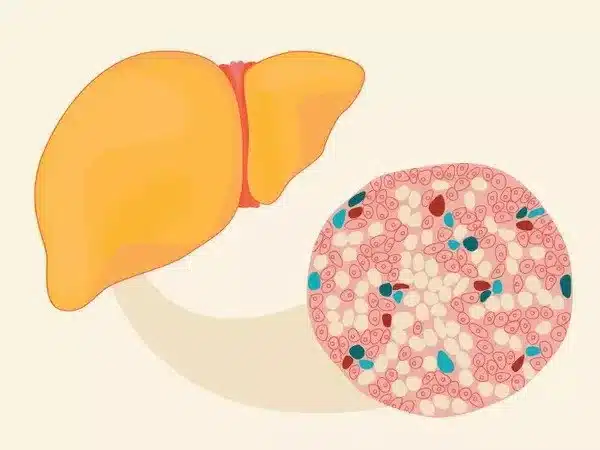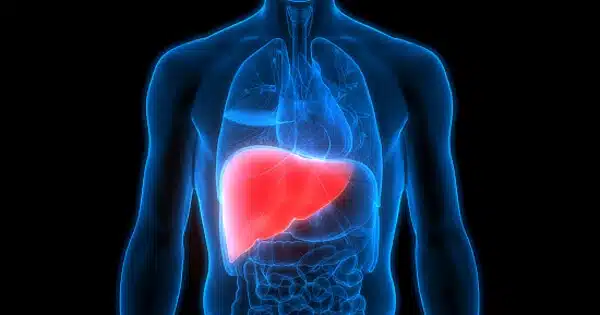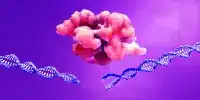The liver and the cardiovascular system are inextricably linked, and changes in liver function can have serious consequences for the heart. The liver’s primary function is to process nutrients, drugs, and toxins from the bloodstream. When the liver is damaged, it loses its ability to perform these functions efficiently. As a result, there may be an imbalance in the levels of various substances in the blood, which can affect the heart directly or indirectly.
Researchers from Cedars-Sinai’s Smidt Heart Institute discovered that even subtle forms of liver disease have a direct impact on heart health. The findings, which were recently published in the journal Frontiers in Cardiovascular Medicine, help to clarify the relationship between liver disease and heart disease beyond the risk factors that they share.
The researchers compared patients’ FIB-4 scores (a marker for liver fibrosis that can indicate the risk of developing severe liver disease) with heart abnormalities visible on cardiac MRI scans in the retrospective study. They discovered that high FIB-4 scores were linked to abnormalities in heart function and vascular dimension.
The study’s lead and corresponding author, Alan Kwan, MD, a cardiologist and cardiac imaging researcher at the Smidt Heart Institute, said that while it was known that nonalcoholic fatty liver disease was associated with cardiovascular death, the relationship was poorly understood and possibly obscured by risk factors the two share, such as diabetes.
Our overall goal with this study was to investigate the connections between the heart and the liver – a newer area of research, but one that made sense to investigate further. We wanted to look more closely at these associations because the liver processes cholesterol and produces factors involved in blood clotting and inflammation, all of which can affect the heart.
Alan Kwan
Previous similar studies had been limited in scope, looking only at how cirrhosis and nonalcoholic fatty liver disease affect the heart.
The American Heart Association (AHA) issued a statement earlier this year stating that nonalcoholic fatty liver disease, which affects more than one in every four adult Americans, is a risk factor for atherosclerotic cardiovascular disease. According to the AHA, the leading cause of death in people with nonalcoholic fatty liver disease is heart disease, not liver disease progression.
“If 25% of the population has this potential risk factor for cardiac disease, we knew we needed to understand it more fully,” Kwan explained. “Our overall goal with this study was to investigate the connections between the heart and the liver – a newer area of research, but one that made sense to investigate further. We wanted to look more closely at these associations because the liver processes cholesterol and produces factors involved in blood clotting and inflammation, all of which can affect the heart.”

The study was carried out by reviewing electronic medical records from the previous 11 years of 1,668 patients who had low, moderate, or high FIB-4 scores within one year of having a cardiac MRI, while controlling for standard cardiovascular risk factors. They discovered that nearly 86% of patients had at least one heart defect.
Cardiac MRI provides a unique view of the heart by using detailed imaging to detect subtle changes in heart structure, function, blood vessel size and structure, heart muscle composition, and other factors. “The abnormalities we saw were vascular changes – enlargement of blood vessels coming out of the heart as well as an increase in how much blood was moving,” Kwan explained.
“Typically, when physicians examine the heart, we aren’t thinking about the liver, and vice versa. We tend to be very specialized in our own organ categories. But this study’s findings indicate that we can and should screen for liver conditions when looking at heart conditions — we can’t view the heart and the liver as completely separate organs functioning on their own islands.”
The next step in the research, according to Kwan, is to look into the impact that liver disease can have on heart health.
“Also, other questions arise,” he added, “such as whether medications used to treat nonalcoholic fatty liver disease could also benefit the heart?” Should nonalcoholic fatty liver disease be a standard risk factor to consider when you see your cardiologist or primary care physician and risk factors such as high cholesterol, blood pressure, diabetes, and family history are discussed?”
Susan Cheng, MD, MPH, senior and co-corresponding author of the study and director of the Institute for Research on Healthy Ageing in the Department of Cardiology at the Smidt Heart Institute, agreed that there are numerous reasons to continue research in this area.
“If we can understand the basic science of how the liver affects the heart, we will likely be able to better understand other heart and organ interactions,” Cheng, who also holds the Erika J. Glazer Chair in Women’s Cardiovascular Health and Population Science, said. “This could also shed light on potential future targeted therapies to prevent cardiovascular disease in liver disease patients.”














